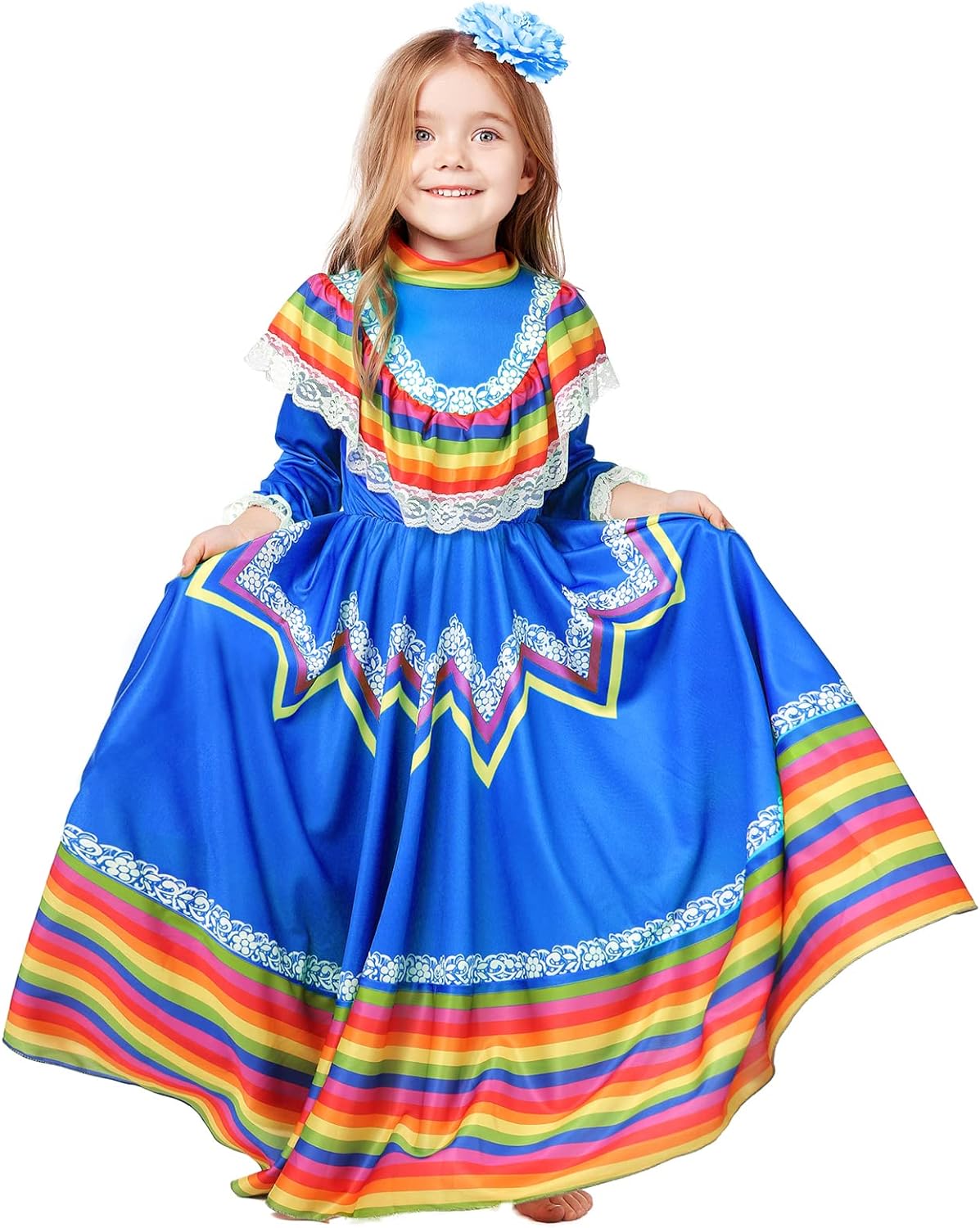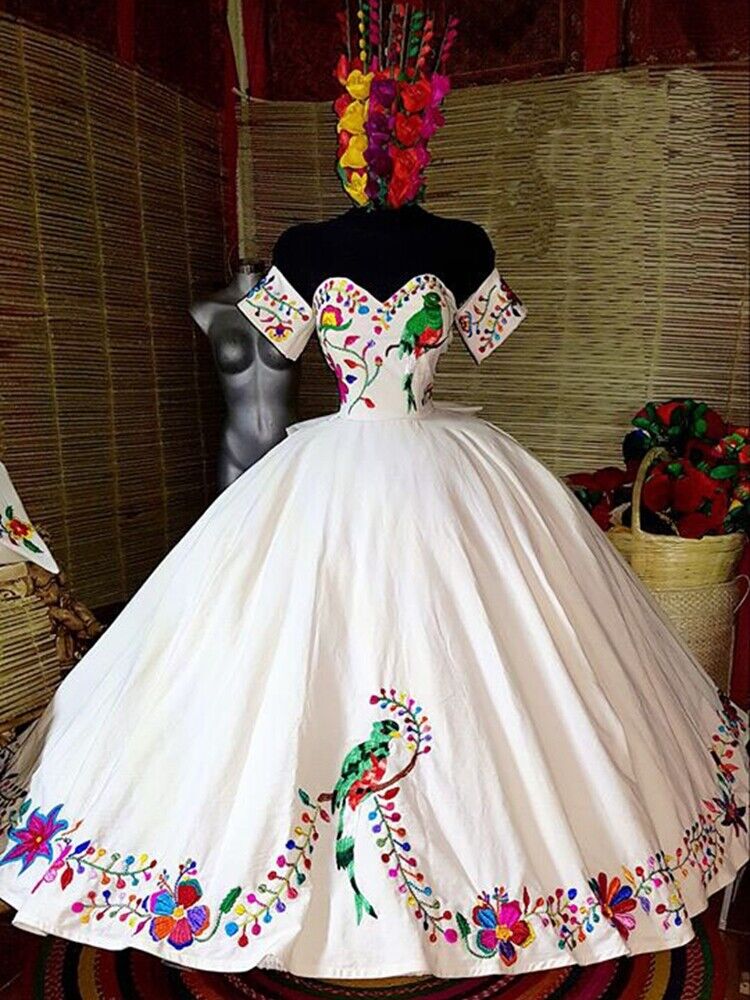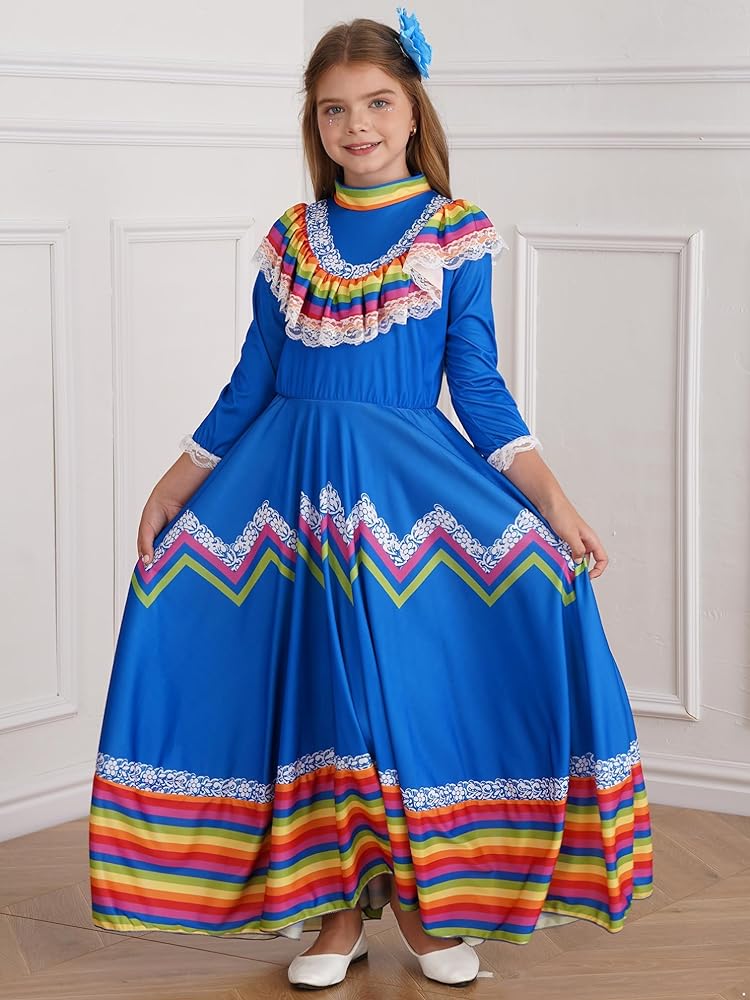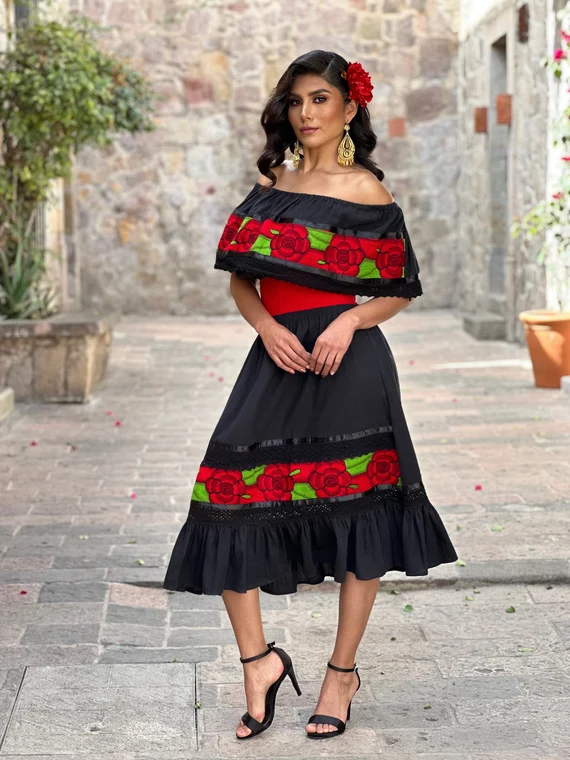I. Introduction

A. The cultural significance of Mexican dress
Mexican dress holds deep cultural significance in Mexican culture. They represent the rich traditions, vibrant colors, and skilled craftsmanship of the Mexican people. These dresses are not just garments; they are symbols of heritage, identity, and pride.
B. Embracing the colors, traditions, and craftsmanship of Mexican attire
Embracing these elements allows individuals to connect with the culture, traditions, and history of Mexico, appreciating the artistry and beauty that these dresses represent.
II. History and Diversity of Mexican Dresses
A. Traditional Mexican Dress Styles
- Admiring the beauty of the iconic Mexican dress: the “China Poblana”
The China Poblana dress is a national symbol of Mexico, known for its vibrant colors and elaborate embroidery. It holds historic significance as a fusion of Indigenous, Spanish, and African influences and represents the strong and resilient women of Mexico.
- The elegance of the “Zapotec Dress” in Oaxaca
The Zapotec Dress, also known as the “Tejido de Lanzadera,” is a traditional dress from the Zapotec indigenous community in Oaxaca. This dress represents the rich cultural heritage of the Zapotec people.
- The vibrant and intricate embroidery of the “Chiapas Dress”
The Chiapas Dress, also known as the “Huipil,” is a traditional dress from the state of Chiapas. It is renowned for its vibrant colors and intricate embroidery, which often depicts elements of nature and local traditions. This dress is a beautiful representation of the craftsmanship and cultural heritage of the indigenous communities in Chiapas.
B. Regional Variations and Influences
- The distinct style of Jalisco’s folkloric dress
Jalisco’s folkloric dress, known as the “Charra” or “Adelita” dress, is influenced by the Spanish colonial culture and the traditional attire of Mexican cowboys and ranchers. It is characterized by its wide skirt, ruffled blouse, and decorative elements such as embroidery and ribbons.
- The indigenous roots of the traditional Mayan dress in the Yucatan Peninsula
The traditional Mayan dress, often called the “Huipil” or “Terno,” is deeply rooted in the indigenous culture of the Yucatan Peninsula. It showcases the ancient weaving techniques, vibrant colors, and symbolic patterns that have been passed down through generations.
- The influence of Spanish colonialism in the traditional “Charro Dress” of Jalisco
The Charro Dress, also known as the “Traje de Charro” or “Escaramuza Dress,” is a traditional dress worn by Mexican horsemen and women. It reflects the influence of Spanish colonial culture, with elements such as the wide-brimmed sombrero and intricately embroidered jackets.
III. Design Elements and Symbolism of Mexican Dresses
A. Colorful Fabric and Patterns

Exploring the significance of these colors and the patterns used in Mexican dresses allows for a deeper understanding of their symbolism and cultural significance.
- Exploring the significance of vibrant colors in Mexican dresses
Mexican dresses showcase an array of bold and lively colors, such as red, yellow, blue, and green. These colors are representative of the vibrant culture, traditions, and landscapes of Mexico. They evoke feelings of joy, celebration, and the warmth of the Mexican spirit. - Traditional patterns such as zigzags, flowers, and geometric motifs
Mexican dresses often feature traditional patterns that are culturally significant. Flowers, such as the iconic Mexican marigold, represent beauty, love, and spirituality. Geometric motifs pay homage to ancient indigenous cultures and their intricate craftsmanship, representing the connection between humans and the natural world.
B. Embroidery and Embellishments

Embroidery and embellishments play a vital role in Mexican dresses, adding intricate details and a sense of artistry. These decorative elements showcase the skilled craftsmanship and the unique cultural heritage of Mexican textiles.
- The art of intricate and colorful embroidery
Mexican embroidery is renowned for its intricate designs and vibrant threads. Traditional embroidery techniques, such as cross-stitch and satin stitch, are used to create elaborate patterns and motifs. Flowers, animals, and geometric shapes are commonly embroidered onto the fabric, showcasing the creativity and talent of Mexican artisans. - Decorative elements like ribbons, lace, and sequins
In addition to embroidery, Mexican dresses often feature decorative elements such as ribbons, lace, and sequins. These embellishments add texture, depth, and a touch of opulence to the dresses. Sequins provide a sparkling and eye-catching element, highlighting the festive and celebratory nature of Mexican culture.
C. Silhouettes and Traditional Techniques
The designs are often flattering, comfortable, and versatile, allowing for ease of movement and a graceful appearance.
- Appreciating the flowing skirts and fitted bodices
Mexican dresses typically feature flowing skirts that allow for ease of movement and a sense of femininity. The skirts can be full and flared or tailored to create a sleek silhouette. Fitted bodices accentuate the curves of the wearer, enhancing the overall elegance and beauty of the dress. - Traditional techniques such as pleating, smocking, and hand-stitching
Traditional techniques like pleating, smocking, and hand-stitching are employed in the construction of Mexican dresses. Pleating adds texture and volume to the fabric, while smocking creates a tailored and fitted look. Hand-stitching ensures attention to detail and adds a unique touch of craftsmanship to each dress.
IV. Contemporary Mexican Dresses and Cultural Preservation

A. Modern Interpretations of Mexican Dresses
This fusion of traditional elements with contemporary fashion trends allows for the preservation of cultural heritage while showcasing the diversity and evolution of Mexican fashion.
- Fusion of traditional elements with contemporary fashion trends
Mexican designers often incorporate traditional embroidery, patterns, or silhouettes into modern designs, adapting them to suit current fashion sensibilities. This fusion allows for the continuation of traditional techniques and aesthetics while appealing to a wider audience. - The role of Mexican designers in promoting and preserving traditional dress
Mexican designers play a crucial role in promoting and preserving traditional Mexican dresses. They collaborate with artisans, support local communities, and showcase the beauty and craftsmanship of Mexican textiles on a global scale. Their efforts ensure the continuation of traditional dressmaking techniques and sustain the livelihoods of skilled artisans.
B. Cultural Importance and Identity
Mexican dresses hold significant cultural importance and serve as powerful symbols of cultural pride and identity. By wearing and embracing Mexican dresses, individuals celebrate their heritage, honor their ancestors, and express their connection to Mexican culture.
- Mexican dresses as a symbol of cultural pride and identity
Mexican dresses are more than just apparel; they represent a cultural identity and serve as a source of pride for many individuals. By wearing Mexican dresses, people proudly exhibit their connection to Mexican roots, paying homage to the country’s rich history and traditions. - The global appreciation and influence of Mexican fashion
The unique beauty and craftsmanship of Mexican dresses have captured the attention and admiration of people worldwide. Mexican fashion has influenced global trends and inspired designers and fashion enthusiasts to incorporate elements of Mexican dress into their creations. This appreciation reinforces the cultural significance of Mexican fashion and promotes intercultural understanding and appreciation.
V. Conclusion
Mexican dresses are remarkable expressions of the cultural heritage and artistic traditions of Mexico. The vibrant colors, intricate embroidery, and skilled craftsmanship embody the richness and diversity of Mexican culture. By exploring the design elements, symbolism, and contemporary interpretations of Mexican dresses, we can appreciate the significance of these garments in preserving cultural heritage, promoting cultural pride, and fostering international unity. Mexican dresses are not just garments; they are tangible representations of history, artistry, and the vibrant spirit of Mexico.

